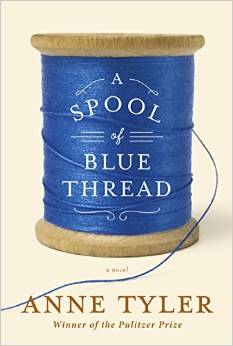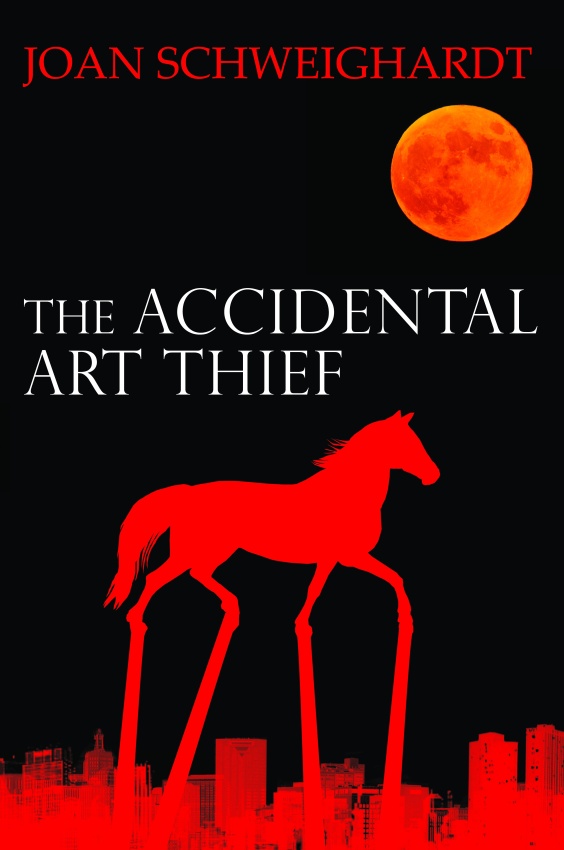Reading Anne Tyler With Your Dog…or Cat
Anne Tyler is the author of some twenty novels, the latest of which is entitled A Spool of Blue Thread. A few of her novels, including The Accidental Tourist, have been made into movies. Tyler’s work will not have you sitting on the edge of your seat; she’s not that kind of writer. More likely, her work will have you lying back in your favorite armchair, relaxed but engaged, with your pup snoring or your kitty purring on your lap, savoring every word.
Anne Tyler has several trademarks. First of all, all of her books take place in Baltimore; it’s hard to remember the details of each one since her first book came out in 60s, but I seem to recall that most of the action unfolds in the Roland Park area of that great city. Often the old houses her characters live in seem as alive as the characters themselves. Her writing is gentle. You can tell she loves her characters. To my recollection there have been no real “bad guys” in her work. There are only people, ordinary people, people who share their secrets, and people who opt not to; people who seem to get it right all the time, and people who stumble and fall and need a helping hand. Mostly she writes about relationships in families, the little arguments that ultimately bring about change, the small concerns that motivate people to action.
ABOUT ANNE TYLER
Some years back, after several of her novels were published close together, a couple of reviewers began to criticize her for being too “sweet” and for having characters that were too “uniformly quirky.” That upset me a bit. Must we always have books and movies with car chases and vulgar men waiting to beat up on other vulgar men? Yes, her characters are quirky, but certainly not in a uniform way. They are as quirky as you or me, as any of us, each in our own way. In her genius, Anne Tyler is able to create characters so real we might think we would recognize them on the street. Certainly we recognize their likenesses in our own family and friend circles. And sweet? Though I like a good mystery as much as anyone, sweet, especially in Tyler’s hands, is a welcome diversion.
It’s been a couple of years now between her last book and her newest one. Maybe the gap in time has softened the critics, or maybe now that we live in what many people have come to call “the age of distraction,” the critics can see the value in her persistent downhome charm. Either way, reviewers (and readers) are loving A Spool of Blue Thread. No one seems to be giving her any flak at all.
A Spool of Blue Thread is about the Whitshank family. In the course of the story readers learn about three different generations of Whitshanks, but the main focus is on Abby Whitshank: wife and mother of four. Later in the book we get a glimpse of the younger Abby, but in the opening chapters the Abby we come to know (and yes, love) is in her early seventies. She is a retired social worker, but she is still on a mission to make the world a better place in any way she can. One of her immediate concerns is that she seems to be having memory lapses now and then; time just gets away from her. Her other concern is her son Denny, the black sheep in the family, the one who can’t seem to keep a job, who forgets to be in touch, who doesn’t share details about his life when he does get in touch, who seems not to care about the lives of the other family members. The ways in which she and her grown children react to her affliction and to Denny’s shortcomings will come to define the family and set the plot in motion.
So where, you might well ask, are the pets?
Abby and her family have two dogs in the book, one when Abby’s kids are young and one as she gets older. One of the indicators of Abby’s cognitive weaknesses is that the older Abby, the one we meet first (and really the one who dominates the story), calls her dog Clarence, even though Clarence is the name of the previous dog, a black lab who died of old age years before. The new dog is Brenda, a golden retriever, and unlike Clarence, she is of course female, but Abby can’t seem to remember that. When people correct her for addressing Brenda as Clarence, she pretty much ignores them or tells them they are mistaken.
You could say the dogs are a device in the book, and in some sense they are. They symbolize the division between youth and old age. They provide evidence that Abby is suffering some kind of break with reality in her latter years. In once chapter, the younger Abby uses the excuse that she needs help getting Clarence to the vet to get her son Denny into the car so that she can drop him off at the office of a psychologist who she thinks can help him. So yes, the dogs are a device. And in fact, ultimately it is Abby’s inability to know which dog she is walking that brings about the most significant changes in the book, for all of the characters. But on the other hand, Anne Tyler’s characters are not the kind of people who would choose to go through life without pets. They are animal lovers, one and all. We expect to find dogs and cats in her stories, just as we expect to find them in the homes of certain people. And for that reason alone, Anne Tyler is a writer that “Your Pet Space” readers may want to know more about.
Joan Schweighardt, our Literary Editor, is a freelance writer working for both private and corporate clients. She is also a five-time published novelist. She lives in Albuquerque with her husband and her dog.










